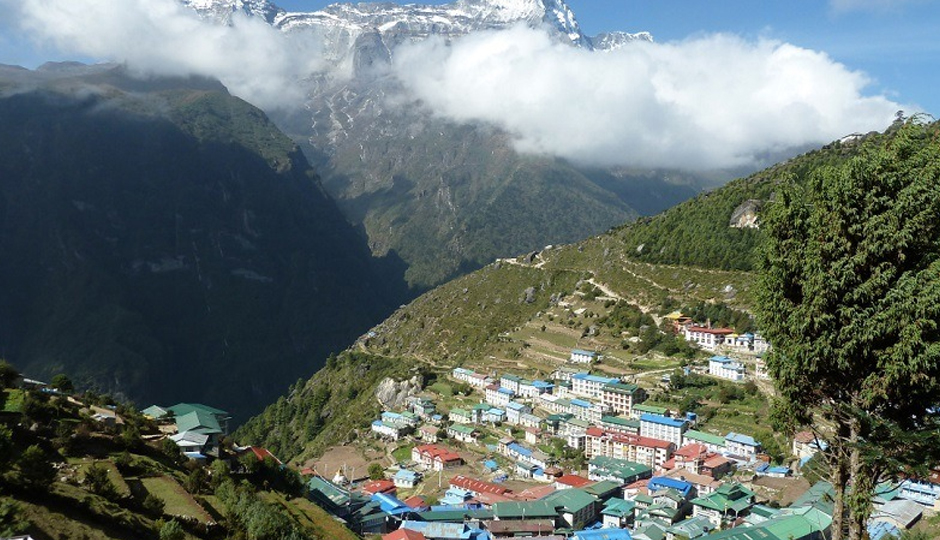19 Must-See Places In Cameroon: Discover The Beauty And Diversity
By: Priyanka Maheshwari Sat, 24 June 2023 4:50:21
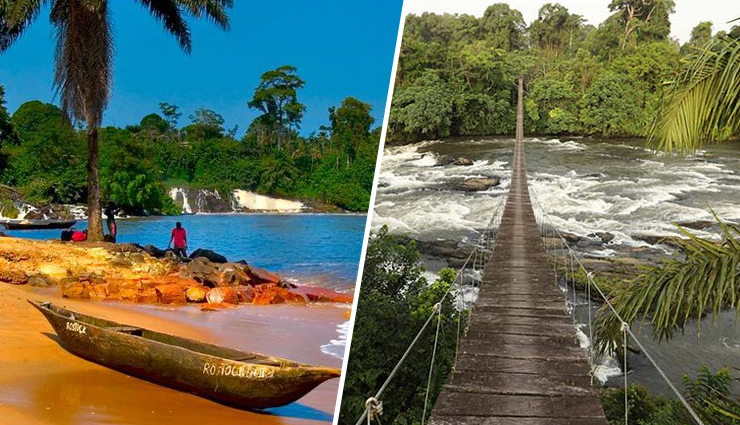
Cameroon, officially known as the Republic of Cameroon, is a country located in Central Africa. It is bordered by Nigeria to the west, Chad to the northeast, the Central African Republic to the east, Equatorial Guinea, Gabon, and the Republic of the Congo to the south, and the Atlantic Ocean to the southwest. From breathtaking mountains and lush rainforests to vibrant cities and picturesque beaches, Cameroon offers a wide range of attractions for travelers to explore. In this article, we will highlight 19 must-see places in Cameroon that showcase the country's natural beauty, historical significance, and unique cultural experiences.
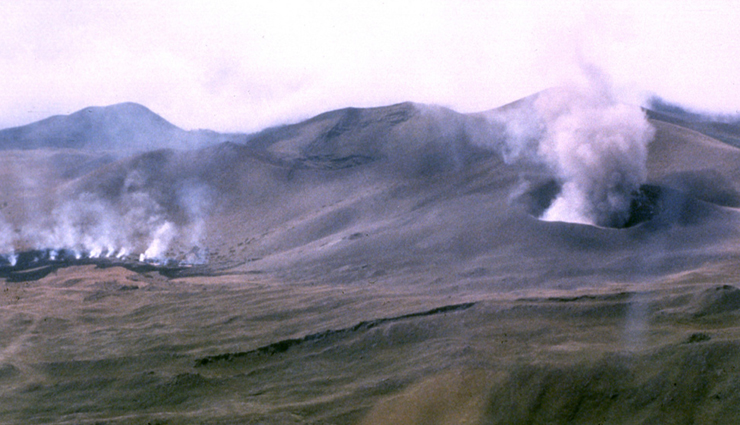
# Mount Cameroon
Mount Cameroon, commonly known as Mount Fako, is an active volcano in West Africa with a height of 4,095 metres (13,435 feet). It is located near the shore in southwestern Cameroon and provides climbers with a tough and rewarding climbing experience. The mountain features a variety of habitats, including rainforests, grasslands, and montane forests, which are home to a variety of fauna and rare plant species. Mount Cameroon is culturally significant to the Bakweri people and the site of the annual Mount Cameroon Race of Hope, a well-known athletic event. Mount Cameroon is a natural marvel and an iconic emblem of Cameroon's rich geographical and cultural history, with its imposing presence and spectacular panoramic vistas.
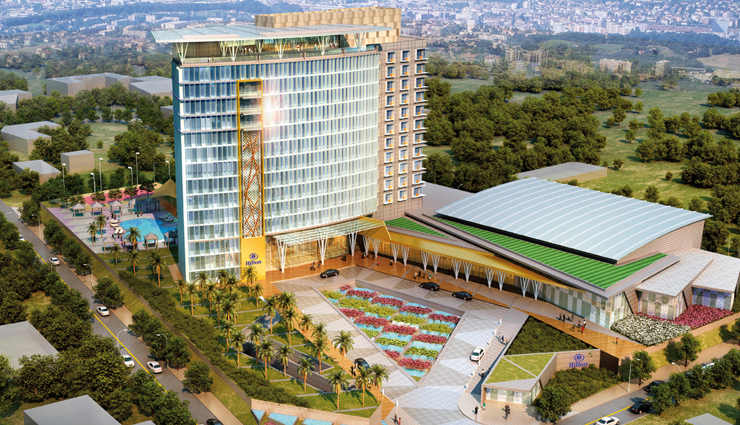
# Douala
Douala is the economic capital and largest city of Cameroon, located on the Wouri River near the Gulf of Guinea. It is a bustling metropolis and serves as a major commercial, industrial, and transportation hub in the country. Douala plays a vital role in Cameroon's economy, serving as the gateway for international trade and hosting the largest port in Central Africa. The city boasts a vibrant and dynamic atmosphere, with bustling markets, lively streets, and a diverse population. It offers a mix of modern infrastructure, colonial-era architecture, and traditional neighborhoods. Douala is known for its vibrant nightlife, with numerous bars, restaurants, and entertainment venues. It also features cultural attractions such as the Douala Museum of Art, showcasing traditional and contemporary Cameroonian art. With its strategic location and lively atmosphere, Douala serves as a gateway for exploring the natural wonders, cultural heritage, and business opportunities in Cameroon and the wider Central African region.
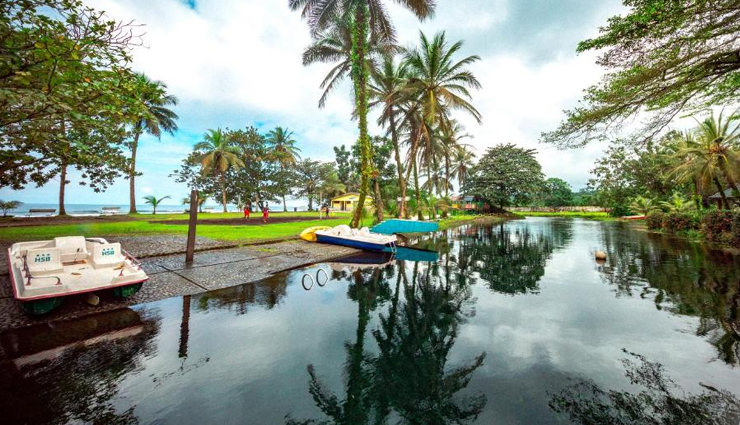
# Limbe
Limbe, also known as Victoria, is a coastal city located in southwestern Cameroon. It is situated on the slopes of Mount Cameroon and offers stunning views of the Atlantic Ocean. Limbe is known for its breathtaking natural beauty, characterized by picturesque black sand beaches, lush rainforests, and a backdrop of the majestic Mount Cameroon. The city's pleasant climate, with warm temperatures moderated by ocean breezes, makes it an attractive destination for both locals and tourists.
The Limbe Wildlife Centre is a popular attraction in the city. It serves as a rescue and rehabilitation center for endangered wildlife, particularly primates. Visitors can observe and learn about various species, including chimpanzees, gorillas, and drills, and gain insights into conservation efforts.
The Limbe Botanic Garden is another notable feature of the city. It is a haven for nature lovers, housing a diverse collection of plant species, including rare and exotic ones. The garden provides a tranquil environment for visitors to explore and appreciate the beauty of tropical flora.
Limbe's colonial past is evident in its architecture, with charming colonial-era buildings adding character to the city. The Limbe Cathedral and the former colonial governor's residence are among the notable landmarks that showcase the city's historical heritage.
The city's coastal location offers opportunities for water-based activities, such as swimming, sunbathing, and beachcombing. Seafood lovers will also delight in the fresh catch from the ocean, with a variety of delicious seafood dishes available at local restaurants and markets.
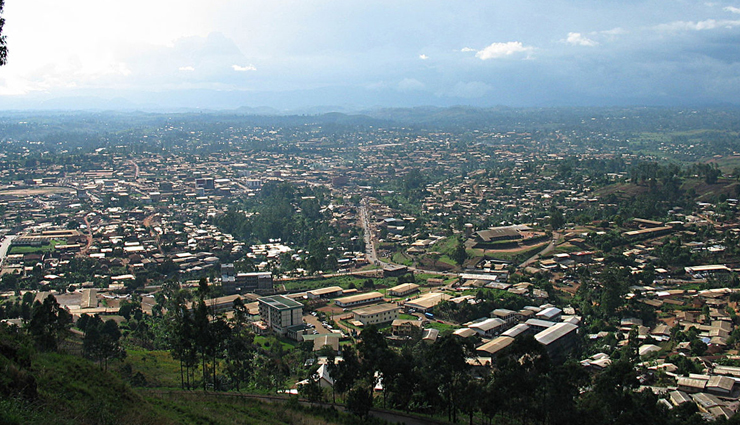
# Bamenda
Bamenda is a vibrant city located in the Northwest Region of Cameroon. It serves as the regional capital and is situated in the highlands of the Grassfields. Bamenda is known for its picturesque landscapes, with rolling hills, lush greenery, and a cool climate. The city is surrounded by breathtaking natural beauty, making it a popular destination for nature lovers and outdoor enthusiasts.
The city's central hub is the Bamenda Main Market, a bustling marketplace where locals and visitors gather to buy and sell a wide variety of goods. It is a vibrant and lively place, offering an authentic experience of the local culture and commerce.
Bamenda is a melting pot of diverse ethnic groups, with the Bamileke, Fulani, and Tikar being the prominent communities. This cultural diversity is reflected in the city's architecture, traditions, and cuisine. Visitors can immerse themselves in the local culture by exploring traditional villages, attending cultural festivals, and sampling traditional dishes.
The city serves as a gateway to the surrounding countryside, which is adorned with picturesque villages, tea plantations, and scenic waterfalls. The nearby Lake Awing is a popular spot for boating and fishing, offering a serene escape from the urban hustle.
Bamenda is also known for its educational institutions, including the University of Bamenda and several colleges and schools. The city has a vibrant intellectual atmosphere, with students and scholars contributing to its dynamic and progressive spirit.
Sports play a significant role in Bamenda's culture, with football (soccer) being the most popular sport. The local football team, Yong Sports Academy, has achieved success in national competitions and garners immense support from the community.
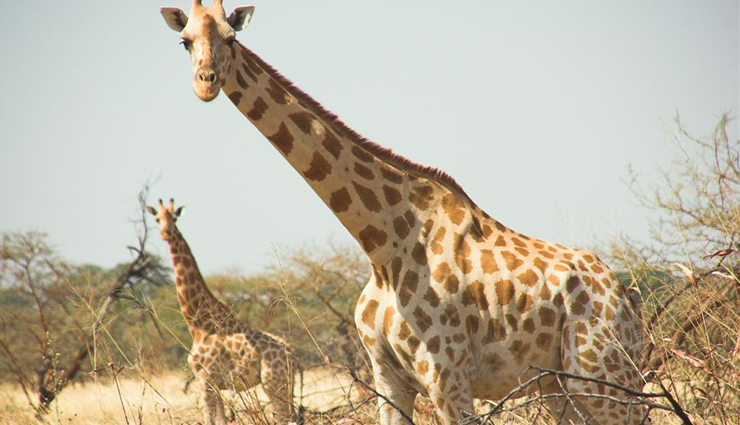
# Waza National Park
Waza National Park is a renowned wildlife reserve located in the Far North Region of Cameroon. It is one of the oldest and most important protected areas in the country, covering an area of approximately 1,700 square kilometers (660 square miles). Waza National Park is known for its diverse range of wildlife and is often referred to as the jewel of Cameroon's national parks. The park is home to numerous species, including elephants, giraffes, lions, cheetahs, hyenas, baboons, warthogs, and various types of antelope. It is also a birdwatcher's paradise, with over 350 bird species recorded in the area.
The park's unique landscape consists of grassy savannahs, acacia woodlands, and seasonal floodplains, creating a beautiful and varied ecosystem. The Waza River runs through the park, providing water sources for wildlife and offering a picturesque setting for visitors.
Waza National Park is a popular destination for wildlife enthusiasts and nature lovers. Safari tours and guided game drives are available, allowing visitors to explore the park and observe the incredible biodiversity up close. The best time for wildlife viewing is during the dry season (November to March), when animals gather around waterholes.
In addition to its wildlife, Waza National Park offers cultural encounters with the local communities, such as the Fulani and Kotoko people, who have coexisted with the wildlife for generations. Visitors can learn about their traditional way of life, including livestock herding and handicrafts.
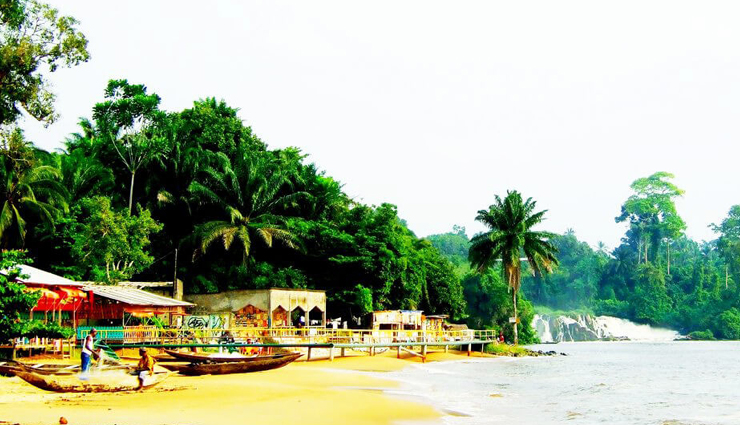
# Kribi
Kribi is a coastal town located in the South Region of Cameroon, along the Gulf of Guinea. Known for its stunning beaches and natural beauty, Kribi is a popular tourist destination. Kribi is renowned for its picturesque coastline, with pristine sandy beaches and crystal-clear turquoise waters. The town offers a relaxing and laid-back atmosphere, making it an ideal getaway for beach lovers and sun-seekers.
One of the main attractions in Kribi is its famous beach, Plage de Kribi. Stretching for several kilometers, it provides a perfect setting for swimming, sunbathing, and leisurely walks along the shoreline. The beach is lined with palm trees and offers stunning views of the ocean, creating a tropical paradise ambiance.
Kribi is also home to the breathtaking Lobe Waterfalls, which cascade directly into the ocean. These impressive waterfalls are a natural wonder and a must-visit attraction in the area. Visitors can take boat tours to get close to the falls or enjoy panoramic views from viewpoints along the coast.
The town is a hub for fresh seafood, and visitors can savor delicious fish and seafood dishes at local restaurants and beachside shacks. Grilled lobster, shrimp, and fish are among the culinary delights that can be enjoyed in Kribi.
Nature lovers will appreciate the nearby Campo Ma'an National Park, a protected area known for its diverse wildlife and tropical rainforest. The park is home to various species, including elephants, gorillas, chimpanzees, and a wide array of birdlife.
Kribi is also a starting point for exploring the coastal mangroves, where visitors can take boat trips to observe the unique ecosystem and spot wildlife, such as monkeys and exotic bird species.

# Bafoussam
Bafoussam is a vibrant city located in the Western Region of Cameroon. It serves as the regional capital and is situated in the highlands of the Grassfields. Bafoussam is known for its picturesque landscapes, fertile valleys, and rolling hills, offering breathtaking views of the surrounding countryside. The city's moderate climate and fertile soils make it an agricultural hub, with the cultivation of crops such as coffee, tea, cocoa, and fruits.
The city is home to diverse ethnic groups, with the Bamileke being the dominant community. This cultural diversity is reflected in the city's architecture, traditions, and lively markets. Visitors can explore the bustling markets, such as the Mifi Market, where they can find a wide array of fresh produce, crafts, and local products.
Bafoussam is also known for its rich cultural heritage. The city hosts traditional festivals, such as the Ngouon Festival, which showcase traditional dances, music, and rituals. Visitors can immerse themselves in the vibrant local culture by witnessing these colorful celebrations and experiencing the warm hospitality of the local population.
For nature enthusiasts, the surrounding landscape offers opportunities for outdoor activities and exploration. The Bamboutos Mountains, located near Bafoussam, provide a scenic backdrop for hiking and trekking adventures. The nearby Bandjoun village is known for its impressive traditional chief's palace, which is adorned with beautiful sculptures and architectural features.
Bafoussam is also home to educational institutions, including the University of Bafoussam, which attracts students from across the country. The city has a vibrant intellectual atmosphere and serves as a center for education and research in the region.

# Foumban
Foumban is a historic town located in the West Region of Cameroon. It is renowned for its cultural heritage, traditional craftsmanship, and royal history. Foumban is known as the cultural capital of Cameroon, as it serves as the cultural and spiritual center of the Bamoun people. The town is steeped in history, with its roots dating back to the 14th century when it was established as the capital of the Bamoun Kingdom.
The town's architectural charm is evident in its traditional buildings and palaces, which showcase intricate wood carvings and decorative motifs. The Royal Palace, known as the Sultan's Palace, is a prominent landmark in Foumban. It is an impressive structure that reflects the rich cultural heritage and royal history of the Bamoun Kingdom.
Foumban is famous for its traditional craftsmanship, particularly in the production of intricately carved wooden stools, masks, and sculptures. These artistic creations are a testament to the skills and creativity of the local artisans. Visitors can explore the traditional craft workshops and markets to witness the craftsmanship firsthand and purchase unique souvenirs.
The town is also home to the Musée des Arts et Traditions Bamoun (Museum of Bamoun Arts and Traditions). The museum houses a collection of artifacts, including royal regalia, traditional costumes, musical instruments, and historical documents, providing insights into the rich cultural heritage of the Bamoun people.
Foumban is known for its vibrant cultural festivals, such as the Nguon Festival, which is celebrated annually. During these festivals, traditional dances, music performances, and ceremonies take place, offering visitors a chance to immerse themselves in the vibrant cultural traditions of the Bamoun people.
The town's central market, known as the Marché des Artisans, is a bustling hub where locals and tourists gather to buy and sell a variety of goods, including handicrafts, textiles, spices, and fresh produce. It is a vibrant and lively place that showcases the local economy and traditional trading practices.

# Dja Faunal Reserve
The Dja Faunal Reserve is a remarkable protected area located in the southeastern part of Cameroon. It is recognized as a UNESCO World Heritage Site and is considered one of the most important rainforest reserves in Africa. The Dja Faunal Reserve spans across an extensive area of approximately 5,260 square kilometers (2,030 square miles) and encompasses diverse ecosystems, including dense rainforests, rivers, and savannahs. It is situated within the Congo Basin, which is renowned for its exceptional biodiversity and ecological significance.
The reserve is named after the Dja River, which flows through the park, adding to its scenic beauty and ecological importance. The river serves as a lifeline for numerous wildlife species and provides a habitat for various aquatic creatures.
The Dja Faunal Reserve is home to an incredible array of wildlife, including several endangered and endemic species. It is particularly recognized for its populations of great apes, such as chimpanzees and gorillas, as well as forest elephants, leopards, buffalos, and numerous species of primates, birds, and reptiles.
Exploring the Dja Faunal Reserve offers visitors an opportunity to witness the untouched beauty of a pristine rainforest. Guided tours and nature walks are available, allowing visitors to observe wildlife in their natural habitat and learn about the rich ecosystems and conservation efforts in place.
The reserve is also significant for its cultural heritage. It is inhabited by indigenous Baka people who have lived in harmony with the forest for centuries. Their traditional knowledge and sustainable practices contribute to the preservation of the reserve's biodiversity.
Preservation and protection of the Dja Faunal Reserve are of paramount importance. Measures have been implemented to combat illegal hunting, logging, and deforestation. Conservation organizations and local communities work together to ensure the long-term sustainability of the reserve and its unique wildlife.
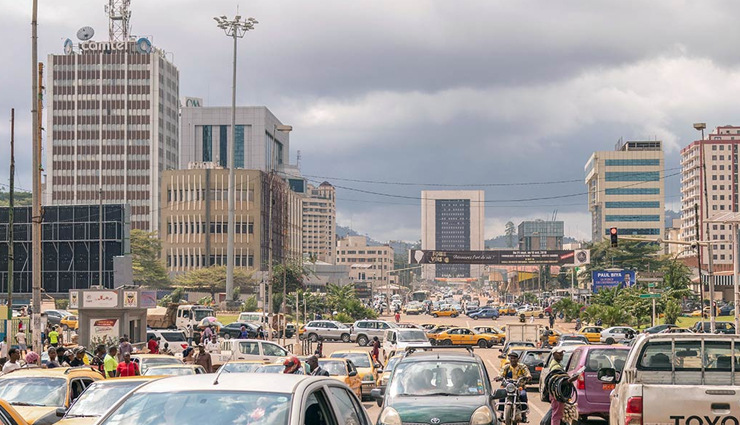
# Yaoundé
Yaoundé is the capital city of Cameroon, located in the central part of the country. It is a bustling metropolis and the political, administrative, and cultural center of Cameroon. Yaoundé is a vibrant city that offers a mix of modern infrastructure, historical landmarks, and cultural richness. The city is known for its pleasant climate, with a cooler temperature compared to other parts of Cameroon, thanks to its higher elevation.
As the political capital, Yaoundé is home to governmental institutions, embassies, and administrative offices. The city serves as the seat of the national government, and it is where many important decisions are made regarding the country's governance.
The cityscape of Yaoundé combines modern architecture with traditional influences. Visitors can explore the city's landmarks, including the Presidential Palace, National Assembly, and Unity Palace, which serve as symbols of the country's political power.
Yaoundé is also a hub for education and research, hosting several universities, colleges, and research institutions. The University of Yaoundé I and the University of Yaoundé II are prominent educational institutions in the city, attracting students from across the country and beyond.
Culturally, Yaoundé offers a vibrant arts and music scene. The city is home to theaters, art galleries, and music venues, showcasing the talents of local artists and performers. Traditional music and dance performances, as well as contemporary art exhibitions, contribute to the city's cultural diversity and creativity.
Visitors to Yaoundé can explore the bustling markets, such as the Mfoundi Market, where they can find a variety of goods, including local crafts, fabrics, fresh produce, and traditional food. The city's culinary scene is diverse, with restaurants and eateries offering both local Cameroonian dishes and international cuisine.
Green spaces and parks are scattered throughout Yaoundé, providing residents and visitors with places to relax, exercise, and enjoy nature. The Mvog-Betsi Zoo is a popular attraction, showcasing a range of wildlife species native to Cameroon.
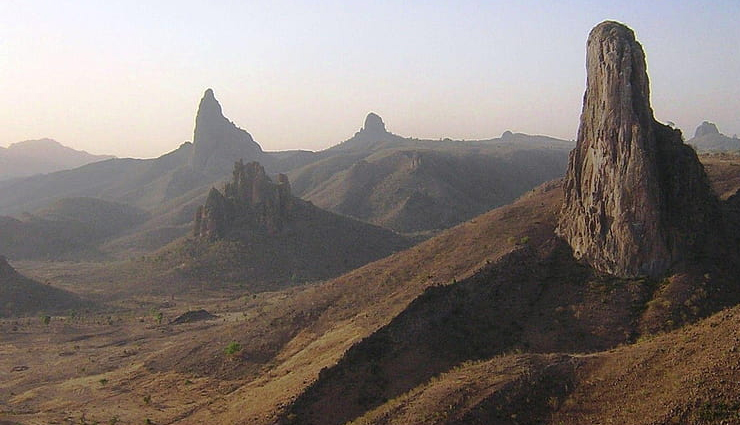
# Rhumsiki
Rhumsiki is a picturesque village located in the Far North Region of Cameroon, near the border with Nigeria. Nestled amidst stunning natural landscapes, Rhumsiki is renowned for its unique rock formations, traditional architecture, and rich cultural heritage. Rhumsiki is known for its breathtaking scenery, with its iconic volcanic rock formations known as the "Pinnacles of Rhumsiki" stealing the spotlight. These towering rocks rise dramatically from the surrounding plains, creating a mesmerizing landscape that attracts visitors from around the world. The golden hues of the rocks, especially during sunrise and sunset, offer a captivating sight and provide ample opportunities for photography and exploration.
The village of Rhumsiki itself is characterized by traditional mud-brick houses, which blend harmoniously with the natural environment. The unique architectural style reflects the cultural heritage of the local Kapsiki people who have inhabited the area for centuries. The village is a living testimony to their traditions, with residents practicing age-old customs and maintaining a strong sense of community.
Visitors to Rhumsiki can immerse themselves in the local culture by participating in traditional ceremonies, witnessing traditional dances, and exploring the vibrant local markets. The markets offer a variety of handicrafts, including intricately woven baskets, pottery, and traditional textiles, showcasing the artistic skills of the Kapsiki people.
The surrounding landscapes of Rhumsiki are a haven for nature enthusiasts. The region is dotted with hiking trails that lead to stunning viewpoints, allowing visitors to marvel at the panoramic vistas of the surrounding valleys and mountains. Birdwatching is also a popular activity in the area, as Rhumsiki is home to a diverse range of bird species.
The hospitality of the local community is a highlight of a visit to Rhumsiki. Visitors can experience the warmth and friendliness of the Kapsiki people through homestays and cultural exchanges, gaining insights into their traditional way of life and enjoying delicious local cuisine.
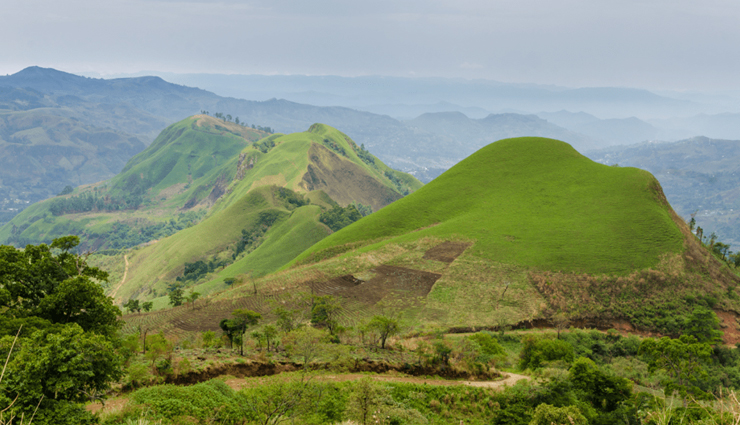
# Maroua
Maroua is a vibrant city located in the Far North Region of Cameroon. It serves as the regional capital and is situated in the Sahel region, characterized by its semi-arid climate and unique cultural heritage. Maroua is known for its bustling markets, lively atmosphere, and rich cultural traditions. The city's central market, known as the Grand Marché, is a vibrant hub where locals and visitors gather to buy and sell a wide array of goods, including textiles, crafts, fresh produce, spices, and livestock. The market provides a glimpse into the local economy and offers a chance to experience the diverse cultural mix of the region.
The architecture of Maroua reflects a blend of traditional and modern influences. The city features traditional round mud-brick houses with conical thatched roofs, known as "sudano-sahelian" architecture, which is a characteristic style of the Sahel region. The traditional dwellings coexist with modern buildings, creating an interesting juxtaposition of old and new.
Maroua is a gateway to the Sahel region and offers opportunities for visitors to explore the surrounding natural landscapes. The nearby Mandara Mountains provide a scenic backdrop and are popular for hiking and trekking adventures. The region is also known for its wildlife, including gazelles, antelopes, and bird species, making it a destination of interest for nature enthusiasts.
The cultural heritage of Maroua is diverse, influenced by the indigenous populations such as the Fulani, Kanuri, and Arab-Berber communities. Traditional festivals, music, and dance performances are part of the local culture and offer visitors a chance to experience the vibrant traditions and customs of the region.
Maroua serves as a commercial and transportation hub, connecting Cameroon with neighboring countries like Chad and Nigeria. The city's airport and road networks make it a vital center for trade and commerce in the region.
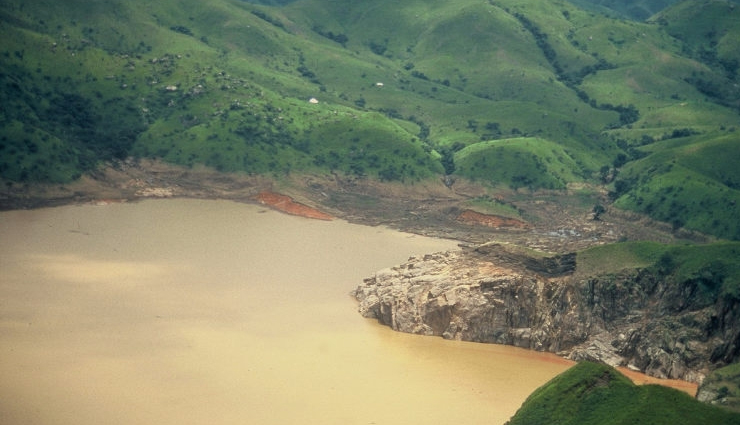
# Lake Nyos
Lake Nyos is a volcanic lake located in the Northwest Region of Cameroon. It gained international attention in 1986 when a tragic natural disaster occurred, known as the Lake Nyos disaster. Lake Nyos is a crater lake situated in the Oku volcanic field, part of the Cameroon Volcanic Line. The lake is notable for its unique geological characteristics and the unfortunate event that took place in its vicinity.
On August 21, 1986, a catastrophic event known as the Lake Nyos disaster occurred. Due to a volcanic eruption or a natural release of carbon dioxide from the lake's bottom, a large amount of carbon dioxide gas was suddenly released into the surrounding area. This resulted in the tragic loss of human and animal lives, as the carbon dioxide suffocated people and livestock in nearby villages.
The disaster brought attention to the phenomenon of limnic eruptions, which are rare events caused by the sudden release of dissolved carbon dioxide from deep lake waters. Following the disaster, efforts were made to mitigate the risk of future limnic eruptions. A degassing system was implemented to release carbon dioxide from the lake and prevent a buildup of the gas.
Despite its tragic history, Lake Nyos remains a place of natural beauty and scientific interest. The lake itself is a serene body of water surrounded by lush vegetation and stunning landscapes. It is a popular destination for researchers and scientists studying limnic eruptions and volcanic activity.
Visitors to Lake Nyos can explore the lake's surroundings, including the memorial sites and monuments erected in remembrance of the victims of the 1986 disaster. It is essential to follow safety guidelines and be aware of the potential risks associated with the lake.
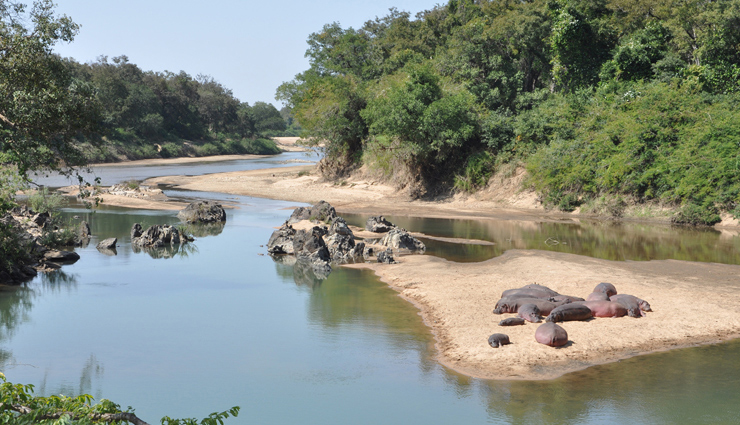
# Bénoué National Park
Bénoué National Park is a significant protected area located in northern Cameroon. It is recognized as one of the country's most prominent national parks and is renowned for its diverse wildlife and stunning natural landscapes. Bénoué National Park covers an extensive area of approximately 1,800 square kilometers (700 square miles) and encompasses a range of habitats, including savannahs, grasslands, and gallery forests. It is situated in the Sudano-Sahelian ecological zone, which is known for its distinct vegetation and wildlife species.
The park is named after the Bénoué River, which flows through its territory, providing a vital water source for the diverse array of flora and fauna that inhabit the area. The river's fertile floodplains attract numerous wildlife species, making Bénoué National Park a prime location for wildlife viewing and conservation.
Bénoué National Park is home to a rich variety of animal species. Visitors have the opportunity to spot large mammals such as elephants, buffalos, giraffes, and antelopes, including the rare Kordofan giraffe. The park is also inhabited by predators like lions, leopards, hyenas, and African wild dogs, making it an ideal destination for wildlife enthusiasts and photographers.
In addition to its impressive wildlife, Bénoué National Park boasts a vibrant bird population, with over 300 bird species recorded within its borders. Birdwatchers can spot various avian species, including vultures, eagles, herons, and many more, making it a haven for birdwatching enthusiasts.
Guided safaris and nature walks are available in the park, allowing visitors to explore the diverse ecosystems and appreciate the natural beauty of the region. Local guides provide insights into the flora and fauna, as well as the cultural significance of the park to the indigenous communities.
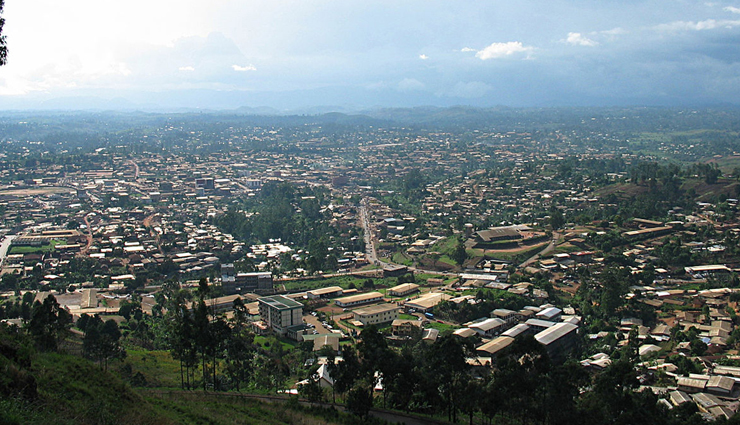
# Bamileke Highlands
The Bamileke Highlands, also known as the Bamenda Highlands or Western Highlands, are a region of elevated terrain located in the western part of Cameroon. This mountainous area is home to the Bamileke people, who have a rich cultural heritage and are known for their agricultural practices and intricate craftsmanship. The Bamileke Highlands are characterized by rolling hills, lush valleys, and picturesque landscapes. The region is part of the Cameroon Volcanic Line and features volcanic formations, including Mount Mbapit and Mount Kupe. The high elevation of the Bamileke Highlands contributes to a cooler climate compared to the surrounding lowlands.
The Bamileke people have inhabited the highlands for centuries and have developed a unique culture and way of life. They are renowned for their agricultural practices, with terraced farming being a common sight on the hilly slopes. The Bamileke cultivate crops such as coffee, cocoa, plantains, yams, and corn, contributing to the region's agricultural productivity.
Traditional craftsmanship is also an integral part of Bamileke culture. Skilled artisans create intricate woodcarvings, masks, pottery, and woven textiles that reflect the cultural identity and artistic prowess of the Bamileke people. These artistic creations are highly valued and sought after by collectors and enthusiasts.
The Bamileke Highlands are also known for their vibrant festivals and ceremonies, which celebrate various aspects of their cultural heritage. These events showcase traditional music, dance, and colorful attire, providing a glimpse into the rich cultural tapestry of the Bamileke people.
Visitors to the Bamileke Highlands can explore the scenic beauty of the region, hike along nature trails, and visit traditional villages to experience the local way of life. The highlands offer opportunities for outdoor activities, including birdwatching, as the region is home to a diverse range of bird species.
In recent years, tourism in the Bamileke Highlands has been on the rise, with visitors attracted to the region's natural beauty, cultural richness, and authentic experiences. Efforts are being made to develop sustainable tourism practices that benefit the local communities while preserving the environment and cultural heritage.
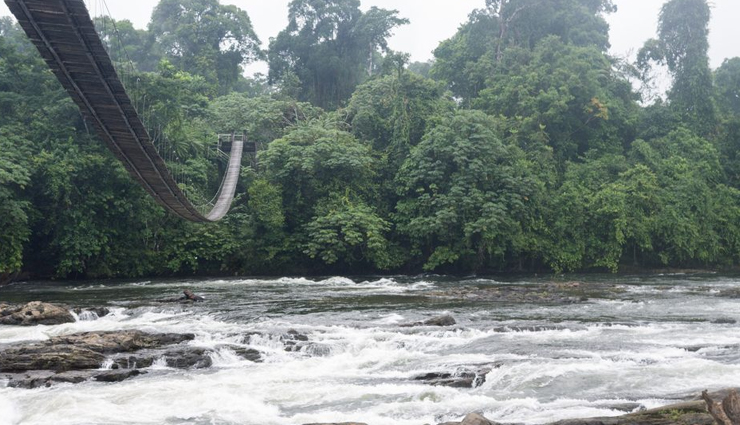
# Korup National Park
Korup National Park is a remarkable protected area located in southwestern Cameroon, near the border with Nigeria. It is renowned for its exceptional biodiversity, ancient rainforests, and significant conservation value. Korup National Park is one of Africa's oldest and most biodiverse rainforests. Covering an area of approximately 1,260 square kilometers (486 square miles), it is recognized as a UNESCO World Heritage Site and serves as a vital ecological hotspot. The park's pristine rainforests are estimated to be over 60 million years old, making them among the oldest in Africa.
The park is a haven for biodiversity, hosting an astounding array of plant and animal species. It is home to more than 400 bird species, including the iconic grey-necked picathartes, as well as a diverse range of primates, such as chimpanzees, gorillas, and several monkey species. Additionally, rare and endangered mammals like forest elephants, giant pangolins, and drills can also be found within the park.
Korup National Park offers visitors the opportunity to explore its captivating natural landscapes through guided tours and hiking trails. The park is known for its towering trees, dense vegetation, and picturesque waterfalls. Visitors can immerse themselves in the enchanting rainforest environment, witness unique flora and fauna, and enjoy the soothing sounds of nature.
The park plays a crucial role in conservation efforts and scientific research. It serves as a living laboratory for studying tropical ecosystems, biodiversity conservation, and the sustainable management of natural resources. Efforts are being made to protect the park's delicate ecosystems from threats such as deforestation, illegal hunting, and climate change.
For those interested in cultural experiences, nearby local communities offer opportunities to engage with the indigenous Bakundu and Ngoe people. Visitors can learn about traditional practices, customs, and traditional crafts, gaining insights into the cultural heritage of the region.
The establishment of eco-lodges and sustainable tourism initiatives around Korup National Park provides visitors with comfortable accommodations while contributing to the local economy and conservation efforts. These initiatives promote responsible tourism practices that respect the park's ecological integrity and support local communities.
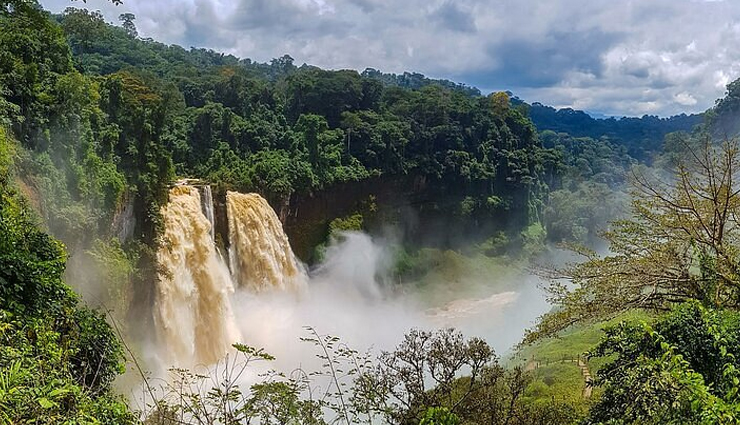
# Ekom Nkam Waterfalls
Ekom Nkam Waterfalls, also known as Chutes de la Méfalé, is a magnificent natural attraction located in western Cameroon. It is renowned for its impressive cascade of water, lush surroundings, and its appearance in the popular film "Greystoke: The Legend of Tarzan." Ekom Nkam Waterfalls is situated in the heart of the dense rainforest near the village of Nkambe in the Moungo Division. The falls are formed by the Nkam River as it plunges over a cliff, creating a breathtaking display of cascading water. With a drop of about 80 meters (260 feet) and a width of approximately 60 meters (200 feet), it is an awe-inspiring sight to behold.
The waterfall's location within the dense rainforest adds to its allure. Surrounded by lush greenery, towering trees, and diverse plant life, Ekom Nkam Waterfalls offers a serene and tranquil atmosphere. The mist created by the waterfall adds a refreshing touch, making it a refreshing escape from the bustling city life.
Ekom Nkam Waterfalls gained international recognition when it appeared in the 1984 film "Greystoke: The Legend of Tarzan." The iconic scene depicting Tarzan's home, known as the "Tarzan's Treehouse," was filmed against the backdrop of these majestic falls. The film's exposure helped increase the popularity of the waterfall as a tourist attraction.
Visitors to Ekom Nkam Waterfalls can enjoy stunning views from designated viewpoints and platforms. The mist from the falls creates a cool and refreshing environment, ideal for relaxation and photography. Surrounding hiking trails also offer opportunities to explore the surrounding rainforest and appreciate the natural beauty of the area.
The local communities near Ekom Nkam Waterfalls are predominantly Bantu tribes, and they play a significant role in preserving and maintaining the site. They provide guiding services and share their knowledge of the area's cultural and natural heritage, adding to the overall experience for visitors.
Efforts are being made to protect and conserve Ekom Nkam Waterfalls and its surrounding ecosystem. Conservation initiatives focus on sustainable tourism practices, environmental education, and the involvement of local communities in the management and preservation of the site.
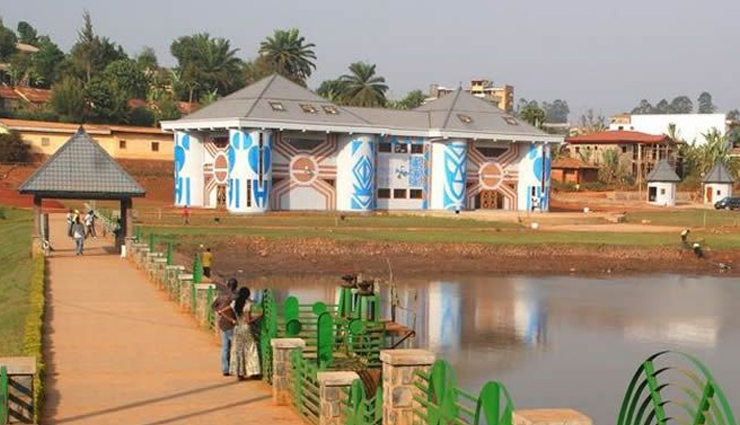
# Dschang
Dschang is a vibrant city located in the West Region of Cameroon. It serves as a major cultural, educational, and economic hub in the region, known for its rich history, picturesque landscapes, and renowned academic institutions. Dschang is nestled in the lush greenery of the Western Highlands of Cameroon, offering captivating views of rolling hills, fertile valleys, and picturesque scenery. The city is located at an altitude of approximately 1,400 meters (4,600 feet), providing a relatively cooler climate compared to the surrounding lowlands.
The city is home to a diverse population, consisting of various ethnic groups, including the Bamiléké, Bamoun, and Bamileke. These cultural influences contribute to the vibrant and diverse atmosphere of Dschang, reflected in its traditions, art, music, and cuisine.
Dschang is renowned for its educational institutions, particularly the University of Dschang, which is one of the leading universities in Cameroon. The presence of the university attracts students from various parts of the country and beyond, fostering a lively intellectual and academic environment.
The city also offers a range of cultural attractions and activities. The Dschang Festival, held annually, showcases traditional music, dance performances, and cultural exhibitions, providing an opportunity to experience the rich cultural heritage of the region. Additionally, the local markets offer a vibrant display of arts and crafts, including wooden sculptures, traditional textiles, and pottery.
Surrounding Dschang, visitors can explore the beautiful natural landscapes. The Bamboutos Mountains, located nearby, offer opportunities for hiking, nature walks, and birdwatching. The region is also known for its coffee and tea plantations, providing a chance to learn about the local agricultural practices and sample the delicious produce.
Dschang serves as a commercial center for the surrounding agricultural areas, playing a significant role in the region's economy. Agriculture, including coffee, cocoa, tea, and food crops, is a major source of livelihood for the local population.
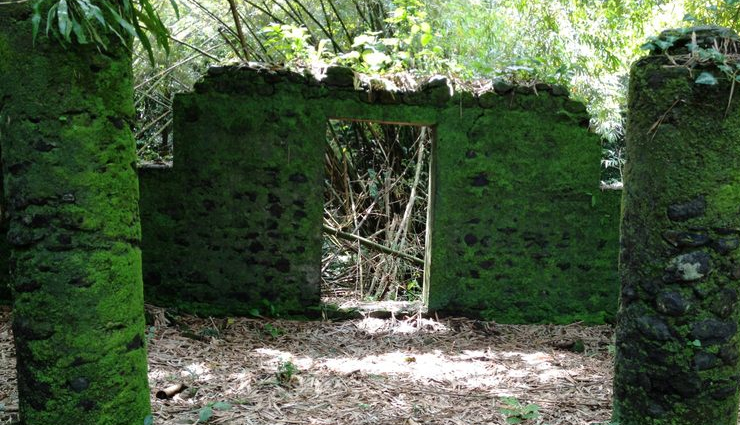
# Bimbia
Bimbia is a historic town located along the coast of Cameroon in the Southwest Region. It holds great historical and cultural significance as it was once a major center of the transatlantic slave trade. Bimbia played a significant role in the transatlantic slave trade during the 18th and 19th centuries. It served as a major trading post where enslaved Africans were captured, held, and transported to various destinations across the Americas. The remnants of this dark period in history can still be seen in the town.
Today, Bimbia stands as a symbol of resilience and serves as a reminder of the atrocities committed during the slave trade. It has become an important site for historical and cultural tourism, drawing visitors who seek to learn about this painful chapter in human history.
The town features several historical landmarks and artifacts related to the slave trade. These include the ruins of the Bimbia Slave Trade Post, which was a key center for slave trading activities. The post provides a glimpse into the conditions endured by the enslaved Africans and the structures that once facilitated the trade.
Bimbia is also known for its cultural heritage and traditional practices. The local Bimbia community continues to preserve their customs and traditions, and visitors have the opportunity to learn about their way of life. The town is home to traditional craftsmen, fishermen, and farmers, offering a glimpse into the local economy and daily activities.
Nature lovers will appreciate Bimbia's scenic beauty. The town is nestled between the Atlantic Ocean and lush mangrove forests. Visitors can explore the mangroves, take boat rides along the coast, and enjoy the tranquility of the surrounding natural environment.
Efforts are underway to develop Bimbia as a heritage site and promote sustainable tourism in the area. This includes the establishment of visitor centers, museums, and the preservation of historical artifacts. Local communities are actively involved in these initiatives, ensuring that their cultural heritage is respected and preserved.





